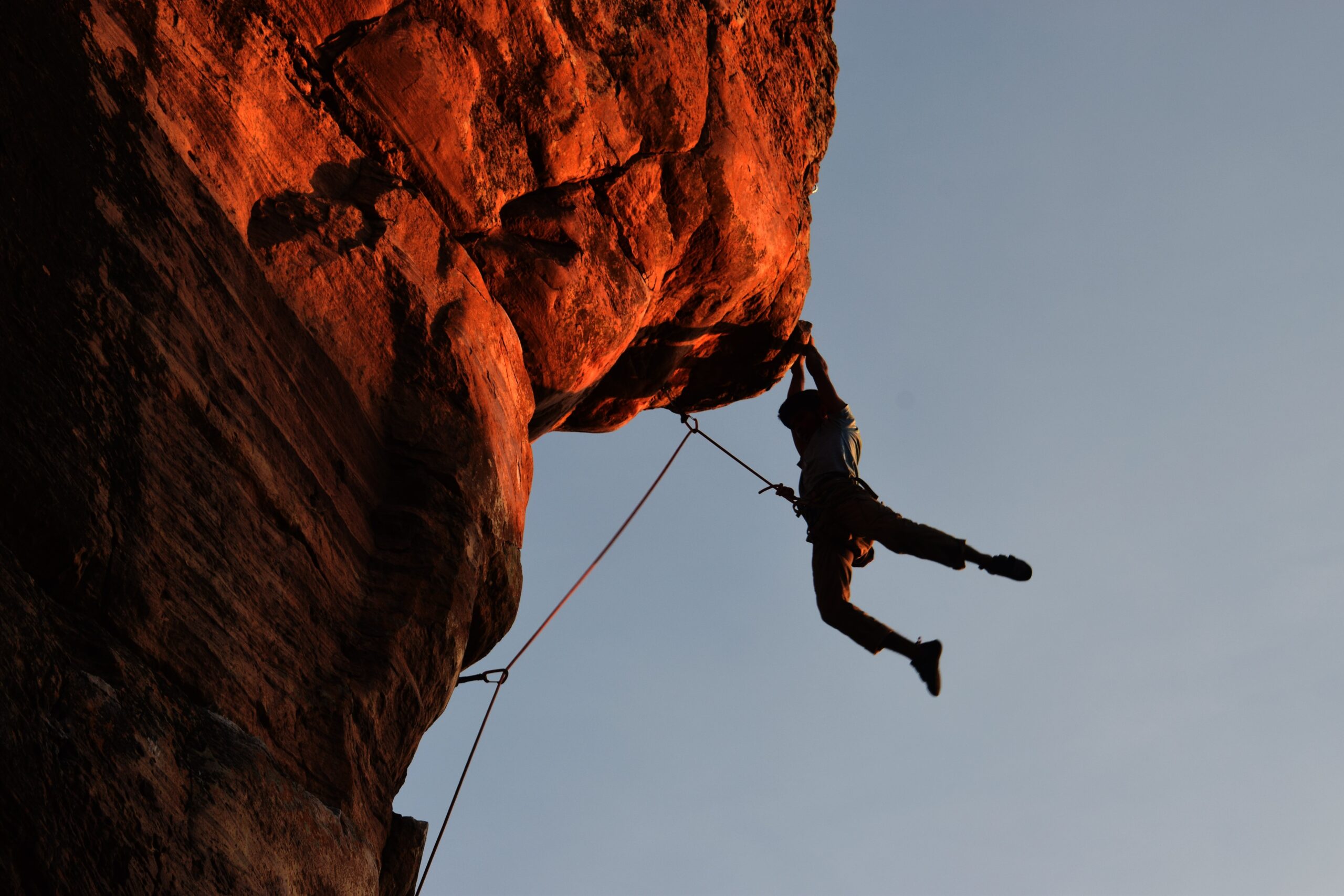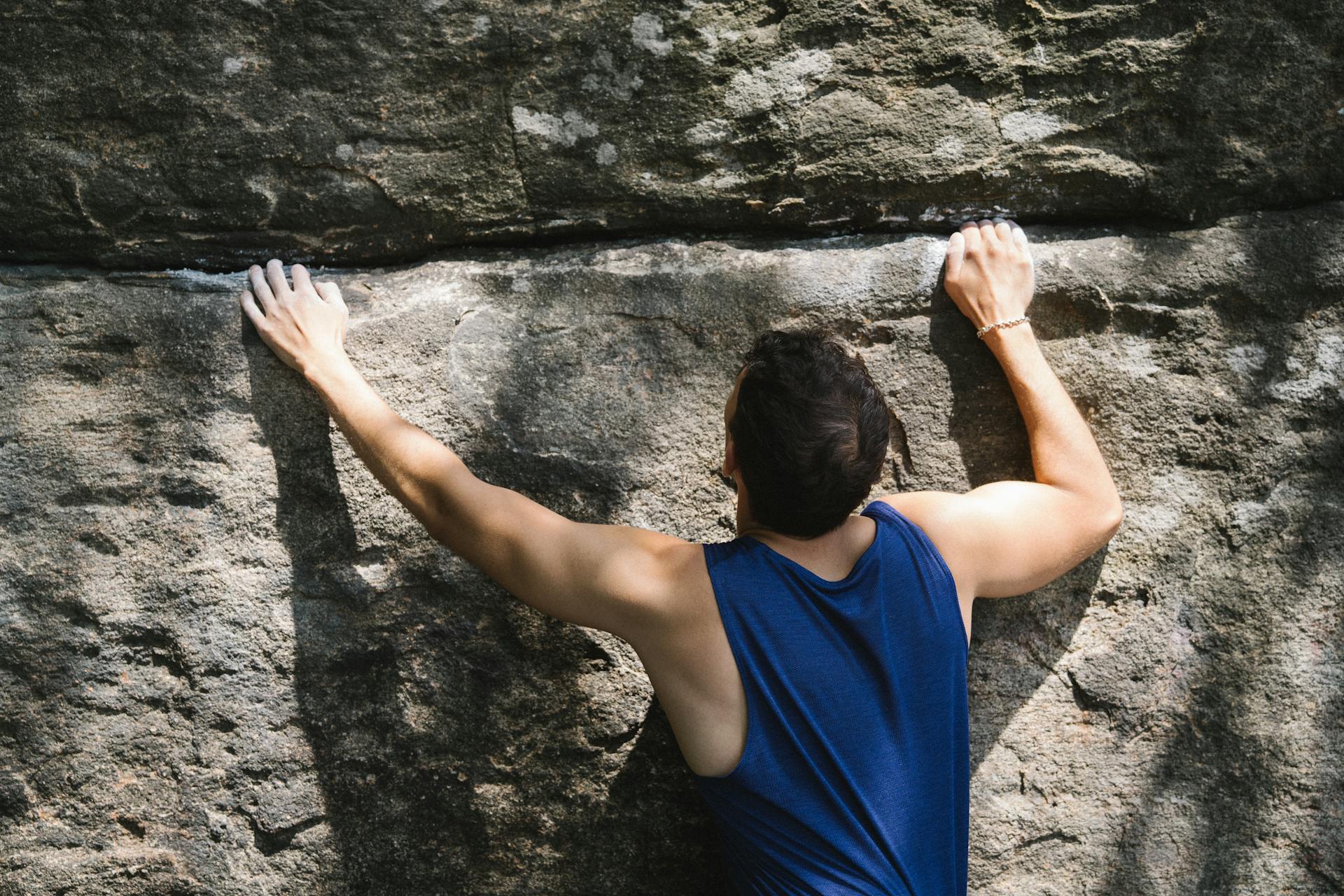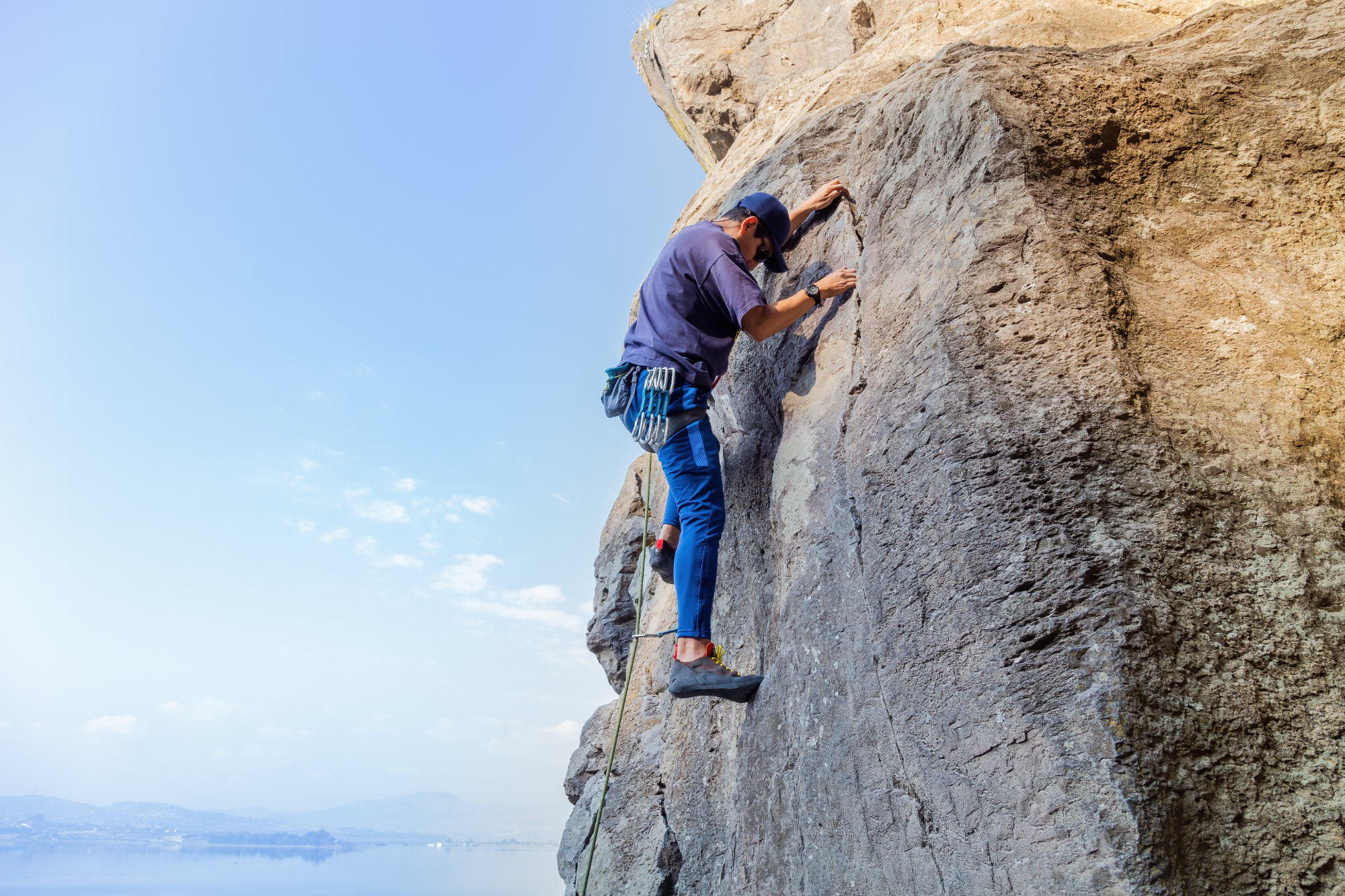If you think just climbing walls is enough, stop and think! Targeted training for rock climbing is essential for climbing, which will prepare your body for the specific demands. In this article, we’ll talk about how you can build your strength, whether you’re a beginner or an experienced climber. This guide will provide you with tips on physical fitness, targeted exercises, and injury prevention, so you can enjoy rock climbing, confidently and safely. So, let’s get started and get one step closer to your climbing goals!
Understanding the Physical Demands of Rock Climbing
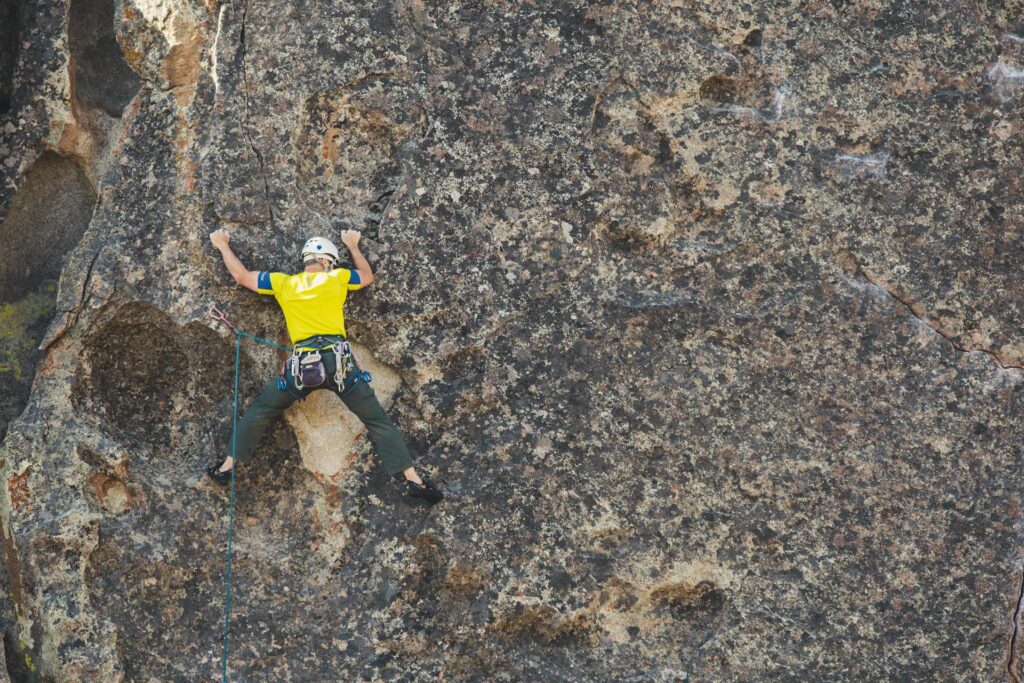
Rock climbing is an activity that tests your whole body strength and stamina. The sport is physically demanding and requires you to use different muscles and movements while climbing. It’s important to understand how your body works for each move on the wall and which specific areas need to be strengthened.
First of all, forearm and grip strength are most important for climbing. You need to use your fingers and wrists to grip the small holds, which can put a lot of strain if you don’t train them. Core strength is equally important, as it provides stability and control when you’re lying on a wall or moving in awkward positions. Back and shoulder muscles are also critical, as these muscles work for pulling motions and help you with every pull of climbing. Also, your leg muscles, such as quadriceps and calves, are needed to push against the wall and provide you balance.
Climbing requires different types of strength. Endurance strength helps you sustain long climbs, while explosive power prepares you for sudden and dynamic moves. Finger strength is also a crucial element, as maintaining grip on small and slippery holds can be very challenging.
On top of all this, there’s also the risk of injuries while climbing. Tendonitis, finger pulley injuries, and shoulder strains are common issues in climbing. But targeted exercises and warm-up routines help you avoid these injuries. If you prioritize strength and injury prevention in your training, you’ll not only improve your climbing skills, but you’ll stay safe too.
Principles of Strength Training for Rock Climbing
Climbing practice alone is not enough for rock climbing. Your body needs to be prepared for the specific demands of the sport, and this is possible through proper strength training. If you train systematically, not only will your climbing performance improve, but your risk of injuries is also greatly reduced. There are some basic principles of strength training that you should incorporate into your fitness routine.
The first principle is specificity in training. It is important that your workout focus on climbing-related movements. For example, exercises that mimic pulling, gripping, and dynamic movements will be very effective for your climbing. If you include exercises like hang board or pull-up variations in your routine, they significantly boost your climbing strength.
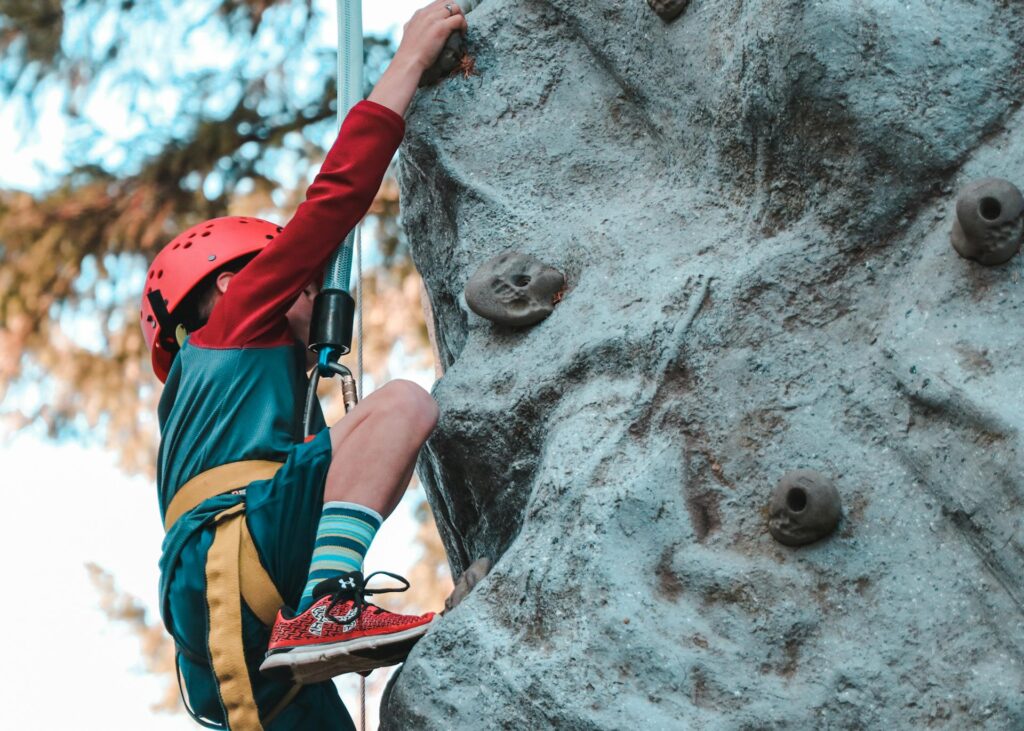
Another principle is progressive overload, which is a fundamental concept of strength training. It means that you gradually increase the intensity of your workout, whether by adding weight, increasing repetitions, or making the exercises more challenging. For example, if you initially do normal dead hangs, you might gradually shift to edge holds or one-arm hangs. This progression helps strengthen muscles and increase their capacity.
Another important aspect is rest and recovery. Many climbers suffer from overtraining, which leads to injuries and fatigue. You need to give your body time to repair and recover. A balanced routine with proper rest between climbing and strength training is best for your overall performance.
It’s important to take a structured approach to strength training. These principles will help you create an effective and safe plan that will help you achieve your climbing goals.
Core Strength for Rock Climbing
Core strength acts as a backbone when rock climbing. Strong core muscles are important to keep you stable and controlled on the wall. This strength not only gives you better balance but also improves your performance on dynamic movements and tough routes. If your core is weak, your body will feel unstable while climbing, and this can cause you to fatigue quickly.
The main role of the core during climbing is to stabilize the body. When you lie down in awkward positions or raise your legs up for a high step, the core muscles keep your body centered and steady. These muscles also help with power generation, like when you have to pull your hips against a wall for a tough move.
Some specific exercises are very effective for improving core strength. Planks are a simple and powerful exercise that enhances overall stability of the core. Side planks and weighted planks target different areas of the core and give you climbing-specific stability. Hanging leg raises are another useful exercise that strengthens your core and hip flexors. Windshield wipers are also a challenging workout that mimics the complex movements of climbing and targets the obliques.
Finger and Grip Strength Training
Finger and grip strength are important for rock climbing, as both are needed to hold on to small holds and tricky grips. If your fingers and grip are not strong, you may have a hard time holding holds, and you will experience fatigue quickly. Using specific exercises and tools to train finger and grip strength can be a game-changer for climbing performance.
The most effective tool climbers use is a fingerboard or hangboard. This climbing-specific equipment targets your finger tendons and grip strength. Beginners may want to start with simple dead hangs, where you hang your weight from an easy edge. As your strength improves, you can reduce the edge size or try advanced techniques, such as one-arm hangs.
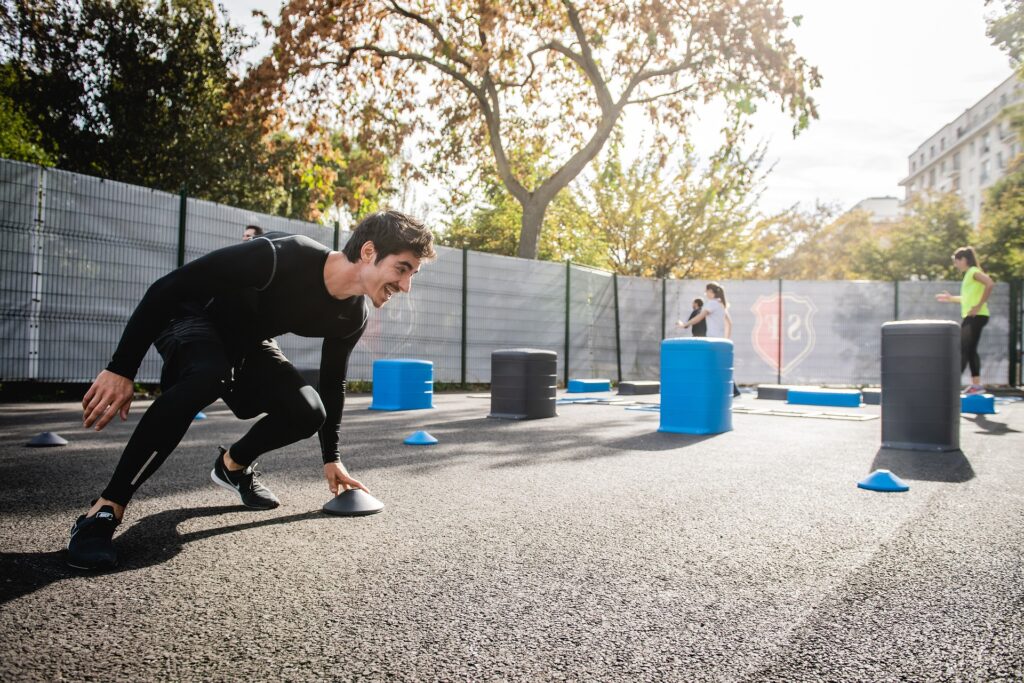
Some supplemental exercises are also useful for grip strength. Rice bucket drills are a simple and effective way to build grip and finger strength. Filling a bucket with rice and inserting your hands into the rice and doing squeezing and twisting movements can greatly improve your grip. Similarly, grip strengtheners like Captains of Crush grippers train your grip at different levels, and build climb-specific endurance.
In addition, you can also incorporate exercises like bar hangs and towel hangs into your routine. These moves not only strengthen grip, but also improve forearm endurance. While doing all of these, one thing is important to keep in mind: do not overtrain, as putting too much stress on fingers and tendons can cause injuries.
Upper Body Strength for Climbers

Upper body strength plays a key role in rock climbing, especially when you have to pull yourself up a wall or do dynamic moves. Having a strong back, shoulders, and arms is important for climbing, as these muscles do the most work when you lift your body weight. If you work consistently on upper body strength, you can confidently tackle tough routes.
Pull strength is the most important part of climbing, and the best exercise to build it is pull-ups. It’s a foundational workout that targets your lats, biceps, and shoulders. Beginners can start with simple pull-ups, while advanced climbers can try weighted pull-ups or archer pull-ups. L-sit pull-ups are also an effective variation that improves your core and pulling strength simultaneously.
Working on shoulder and back strength is equally important, as these muscles control and support your body on the wall. Face pulls are a very useful exercise that works for shoulder stability and injury prevention. Dumbbell rows strengthen the upper back and lats, which are essential for the pulling movements of climbing.
Dynamic strength is also an important aspect of climbing, especially when you have to make explosive moves, such as dynos. Campus board training is perfect for building strength. It involves you performing dynamic pulls with your body weight on wooden rungs, which enhance both power and coordination. Also, exercises such as plyometric push-ups develop explosive power for the upper body.
When working on upper body strength it’s important to remember to avoid overtraining. Giving time for muscles to recover is as important as training itself. Regular and focused upper body training can take your climbing skills to the next level, and you’ll be able to climb more confidently and smoothly.
Lower Body Strength and Flexibility

When people think about rock climbing, they focus mostly on upper body strength, but being strong and flexible in the lower body is equally important. Your legs play a big role in generating balance and power on the wall, whether it’s high steps or tough overhangs. If you work your legs, not only will your climbing performance improve, you will also be able to use energy efficiently.
For lower body strength, your quads and calves need to be strong. Step-ups are a simple and effective exercise that mimics the pushing movements of climbing. In this, you push your body weight onto a box or platform, which builds leg power and endurance. Also, calf raises are an important part of lower body training, as they help you stay stable on footholds and do precise footwork.
Flexibility is as important for climbing as strength. The hips and hamstrings need to be flexible for high steps and wide moves. Hip openers, such as deep lunges and butterfly stretches, improve the range of motion in your hips, which helps for complex climbing moves. Hamstring stretches, such as forward bends or dynamic leg swings, give you the ability to do high steps comfortably.
Balance and stability are also an essential part of lower body training. Single-leg balance drills and stability ball exercises improve your coordination and control. These drills make you more confident and efficient on the wall, especially when you use awkward footholds.
Incorporating Full-Body Workouts
Rock climbing is a full-body sport that demands a combination of your upper body, lower body and core muscles. This is why full-body workouts become an integral part of climbing. These workouts not only build strength but also improve your overall stability and endurance. If you make climbing-specific full-body exercises part of your routine, both your performance and efficiency are boosted.
First of all, it’s important to focus on compound exercises, which target multiple muscle groups simultaneously. Deadlifts are a classic example that simultaneously strengthen your back, legs and core muscles. These exercises are very effective for power-generating moves while climbing, such as pulling on overhangs or doing high steps. Also, squats and overhead presses are best exercises for building full-body strength.
Functional training is also very useful for climbing. Exercises like burpees and kettlebell swings enhance both your strength and cardio endurance, which are essential for long climbing sessions. Farmer’s walks are another effective exercise that trains grip strength, core stability, and leg endurance simultaneously, and mimics the technical demands of climbing.
In addition, bodyweight exercises like push-ups, pull-ups, and planks should be included in your routine. These exercises are not only accessible, but also improve climbing-specific strength and control. Animal flow movements, like bear crawls and crab walks, also take your flexibility and coordination to the next level.
It’s important to take a structured approach to full-body workouts, including a proper warm-up and cool-down. You should work on different parts of your body evenly so as not to risk overtraining. Regular full-body training will make you a balanced climber who can confidently perform on all types of routes.
Developing a Training Plan for Rock Climbing
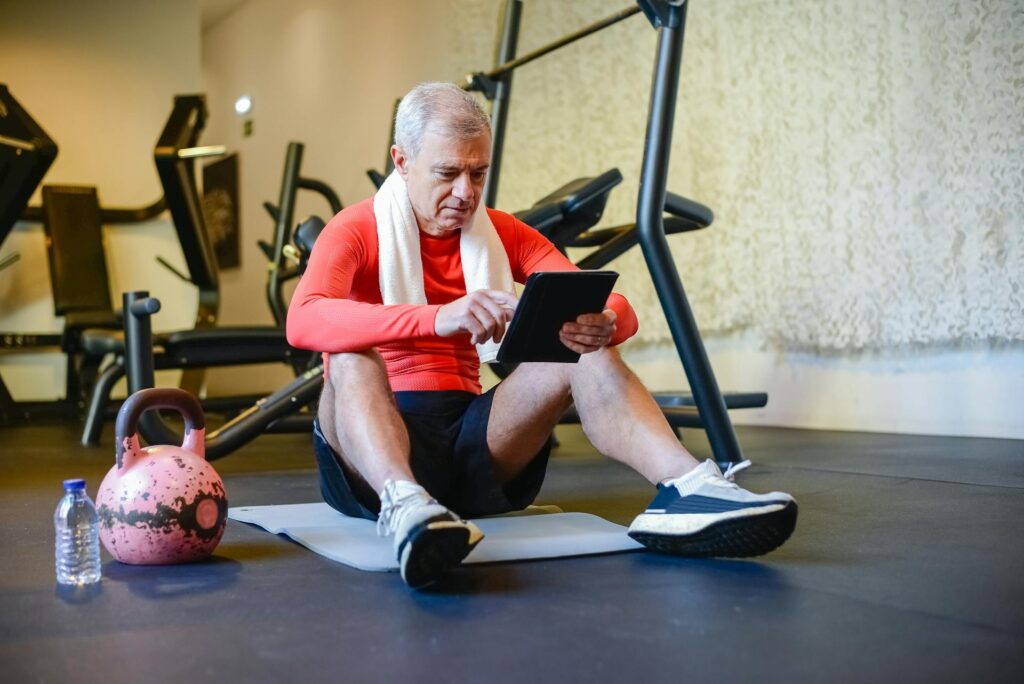
A structured training plan is essential to success in rock climbing. By planning training smartly you can efficiently improve your performance.
Set Goals: Keep your goals clear, such as “complete a 5.10 route in 1 month” or “improve endurance”. This will give you focus and motivation.
Training Split: Include climbing practice, strength training, and flexibility exercises each week. Aim for 2-3 days of climbing practice and 2-3 days of strength training.
Strength Training: Do exercises to strengthen the upper body, core, and legs, such as pull-ups, squats, and fingerboard training.
Rest: Proper rest and recovery days are essential to avoid overtraining. Because it gives your muscles time to repair.
Track Progress: Assess your performance and update your goals each month. This will help you work on your weaknesses and improvements.
If you follow a well-structured and consistent training plan, you can take your climbing skills to the next level.
Nutrition and Recovery for Rock Climbers
Proper nutrition and recovery are essential for rock climbing. If you don’t give your body the right fuel and recovery time, your performance will be impacted.
Nutrition
Protein: Daily protein intake is essential to repair and strengthen muscles. Get protein from chicken, fish, or plant-based sources.
Carbohydrates: Eat complex carbs, such as oats and fruits, for energy. These provide long-lasting energy.
Fats: Healthy fats such as omega-3 fatty acids are important for the health of your joints and muscles.
Hydration: Keep your body hydrated with water and electrolyte drinks to prevent fatigue.

Recovery
Sleep: Muscles recover properly with 7-9 hours of deep sleep.
Stretching: Regular stretching and mobility exercises improve flexibility and relieve muscle tightness.
Active Recovery: Light activities such as walking or swimming increase blood flow and relax muscles.
Proper nutrition and recovery can help you boost your training and climbing performance and avoid injuries.
Common Mistakes in Training for Rock Climbing
There are some common mistakes climbers make during rock climbing training that can slow their progress. By avoiding these, you can improve your performance.
Overtraining: When you train too much without proper rest, your muscles fatigue and your risk of injuries increases. Don’t ignore rest and recovery.
Ignoring strength training: Simply climbing will not increase your overall strength. It’s important to strengthen your upper body, core, and legs.
Incorrect technique: Climbing with the wrong form can cause injuries. Keep your footwork and body position correct.
Lack of flexibility: Flexibility is important for the tough moves of climbing. Add mobility and stretching in your routine.
Ignoring Finger Strength: If you don’t work on finger and grip strength, you will have trouble climbing and holding tough holds.
Skipping Warm-Up and Cool-Down: Proper warm-up gets your body ready, and cool-down helps muscles recover. Never skip these steps.
Inconsistent Training: Consistency is important in training. If you train irregularly, results will be slow.
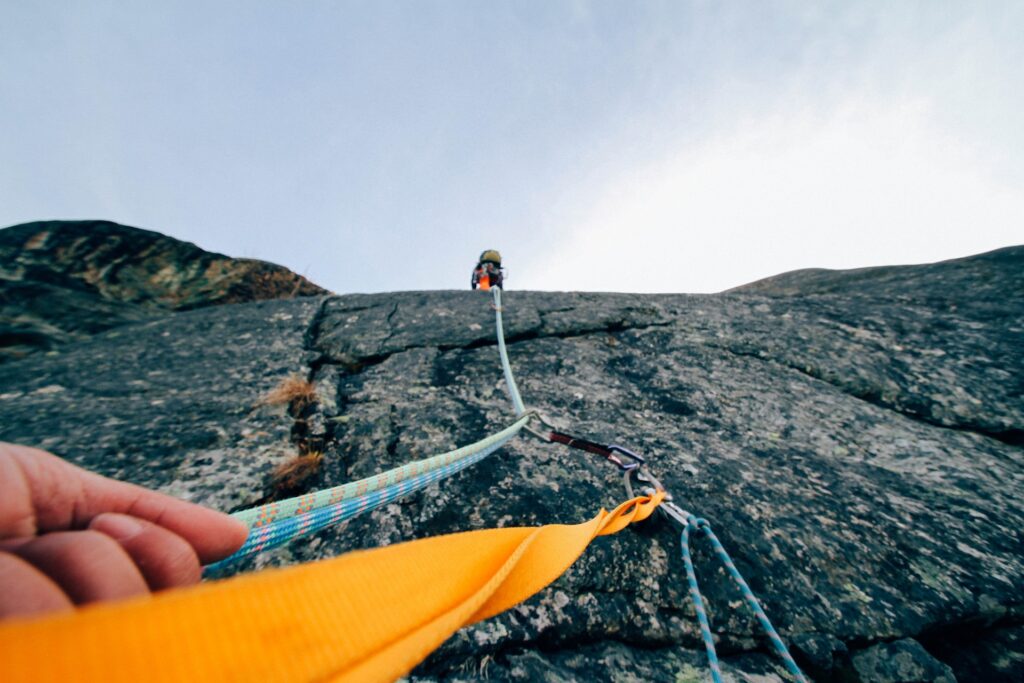
Conclusion
Training in rock climbing is difficult but if you approach your training smartly, you can easily improve your performance. Strength training, flexibility, grip strength, and proper recovery are all equally important.
Common mistakes such as overtraining, improper technique, and lack of recovery must be avoided. If you follow your training regularly and consistently, and pay attention to nutrition and rest, you can efficiently achieve your climbing goals.
Consistency and smart training will take your climbing skills to the next level. So, stay focused, stay strong, and enjoy your climbing journey!
